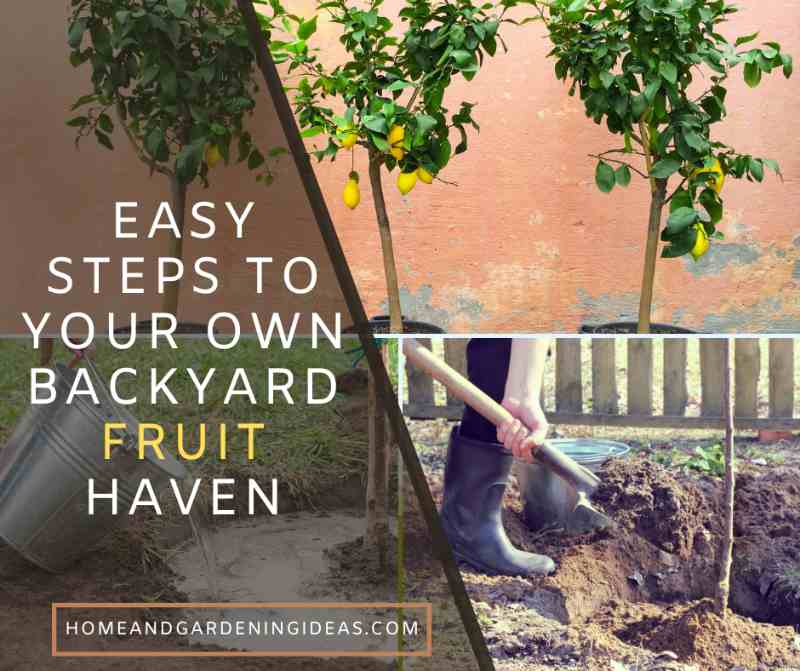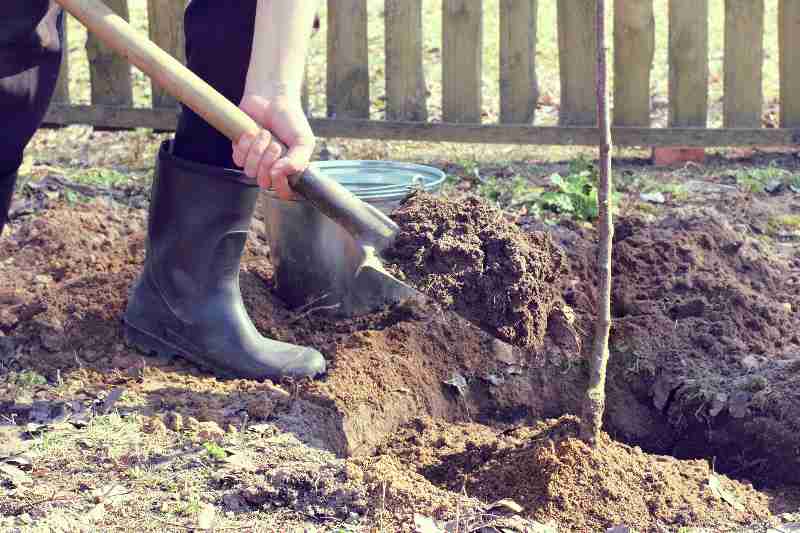Easy Steps to Your Own Backyard Fruit Haven

There’s something magical about stepping into your backyard and being surrounded by a lush, thriving orchard. A backyard orchard not only enhances the beauty of your outdoor space but also provides a bounty of delicious fruits to enjoy.
If you’re an enthusiast willing to embark on a journey of cultivating a multi-fruit backyard orchard in the USA, this comprehensive guide will provide you with all the necessary information to get started, care for your trees, and make the most of your harvest.
Choosing the Right Fruit Trees
Selecting the appropriate fruit trees is crucial for a successful backyard orchard. Consider factors such as climate, soil type, and available space. In the USA, various regions have distinct climates, so it’s essential to choose trees that thrive in your specific zone.
Common fruit trees suitable for various regions in the USA include:
- Apple Trees: Varieties like Honeycrisp, Gala, and Granny Smith flourish in different parts of the country. Apples are relatively easy to grow and offer a diverse range of uses from fresh eating to baking.
- Peach Trees: For warmer climates, peaches like Elberta and Redhaven are excellent choices. Their juicy, sweet fruits are a delight in the summertime.
- Cherry Trees: Both sweet and sour cherry varieties can be grown in the USA. Bing and Rainier cherries are popular sweet options, while Montmorency cherries are well-known for their tartness.
- Pear Trees: Bartlett and Anjou pears are well-suited for various regions. Pears are not only tasty but also add an elegant touch to your orchard.
- Plum Trees: Japanese and European plum varieties, such as Santa Rosa and Stanley, can thrive in different parts of the USA.
Planning and Planting

- Site Selection: Choose a sunny spot in your backyard with well-draining soil. Avoid low-lying areas prone to frost pockets or water accumulation.
- Spacing: Provide adequate spacing between trees to prevent overcrowding and allow for proper air circulation. Depending on the variety, most fruit trees need about 15 to 25 feet of space between them.
- Soil Preparation: Conduct a soil test to determine its pH and nutrient levels. Amend the soil as needed to create an optimal environment for your fruit trees.
- Planting: Follow planting guidelines provided by the nursery or supplier. Ensure that the tree’s graft union (where the fruiting variety is attached to the rootstock) is above the soil line.

Caring for Your Orchard
- Watering: Proper watering is crucial, especially during the tree’s early years. Provide consistent, deep watering to establish strong root systems. Use a drip irrigation system to minimize water wastage.
- Mulching: Apply a layer of organic mulch around the base of each tree to conserve moisture, suppress weeds, and regulate soil temperature.
- Fertilization: Feed your trees with a balanced fertilizer in early spring before new growth emerges. Avoid excessive nitrogen, as it can lead to excessive vegetative growth at the expense of fruit production.
- Pruning: Regular pruning ensures proper airflow, sunlight penetration, and overall tree health. Prune during the dormant season to remove dead or diseased branches and shape the tree.
- Pest and Disease Management: Monitor your trees for signs of pests and diseases. Consider using integrated pest management (IPM) techniques, such as introducing beneficial insects, using traps, and employing organic sprays when necessary.
Harvesting and Enjoying the Fruits
- Harvest Timing: Each fruit variety has its optimal harvesting time. Research and observe your trees to determine when the fruits are ripe and ready to be picked.
- Storage: Store harvested fruits properly in cool, dark places or refrigerators, depending on the variety. Some fruits can be stored for longer periods, while others are best enjoyed fresh.
- Culinary Delights: Experiment with various culinary creations using your homegrown fruits. From jams and pies to smoothies and fresh fruit platters, the possibilities are endless.
Creating a multi-fruit backyard orchard in the USA is a rewarding endeavor that brings nature’s bounty right to your doorstep. By selecting suitable fruit trees, planning meticulously, and providing proper care, you can enjoy a bountiful harvest for years to come.
With dedication and a green thumb, your orchard will not only beautify your space but also fill it with the delightful flavors of homegrown fruits.
 Home and Gardening Ideas At home and Gardening ideas we believe inspiring readers about homesteading, self sufficiency
Home and Gardening Ideas At home and Gardening ideas we believe inspiring readers about homesteading, self sufficiency





